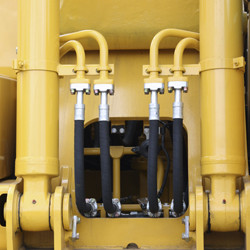Simulating transient phenomena
The electricity market evolution in Europe caused hydraulic machines to be operated in new modes because of frequent start-up and shut-down cycles. This led to the emergence of strong transient flow phenomena that are not yet clearly understood. Conventional numerical simulation tools are not well adapted to capture such transient phenomena. The EU-funded project 'Simulation of transients in hydraulic machines' (SITHYM) used a novel approach to simulate transient flows and hydraulic loadings during unit start-up and shut-down. Researchers used a numerical method that does not rely on a computational mesh to solve transient flows in hydraulic machines. This predictive approach was based on the smoothed particle hydrodynamics (SPH) computational method. The innovative part was SPH and finite-volume (FV) coupling. Based on this, FVs were used around hydraulic components to model boundary layers efficiently. The main flow part in which convective phenomena are predominant is solved by the SPH method. Project members eventually developed a variant to the standard SPH method to manage moving boundary conditions for internal flows. This method was used successfully to simulate the start-up of a pump turbine in turbine mode. Notably and despite the coarse discretisation, it was still possible to measure the hydraulic loading on various hydraulic components. To implement coupling in an industrial computational fluid dynamics process, efficient parallel implementation of the tool is required. To this end, scientists relied on a hybrid parallel strategy that allows multi graphics processing unit computing.The developed tool enables engineers to assess the capacity of the installed machines for safe operation even in modes that were unavailable at design time. Project activities have laid the foundation for optimisation of simulations with innumerable applications in mechanical engineering and the energy sector.







